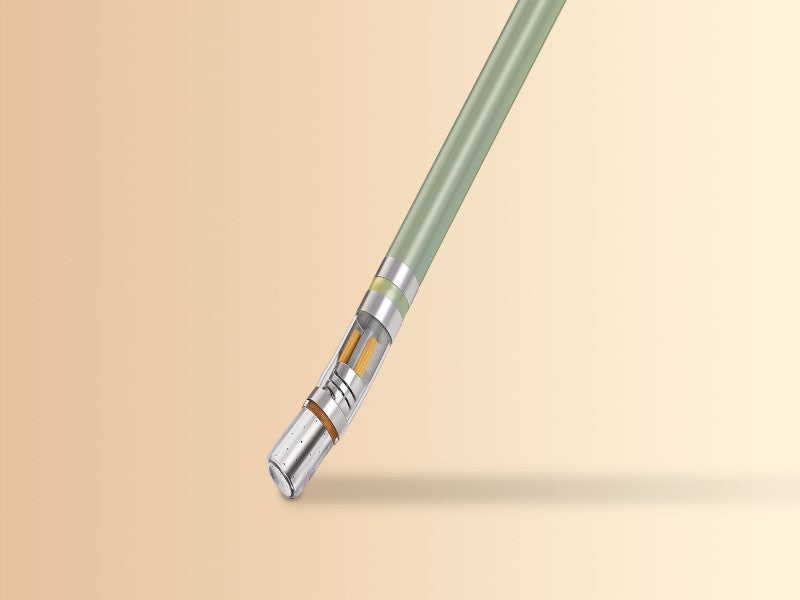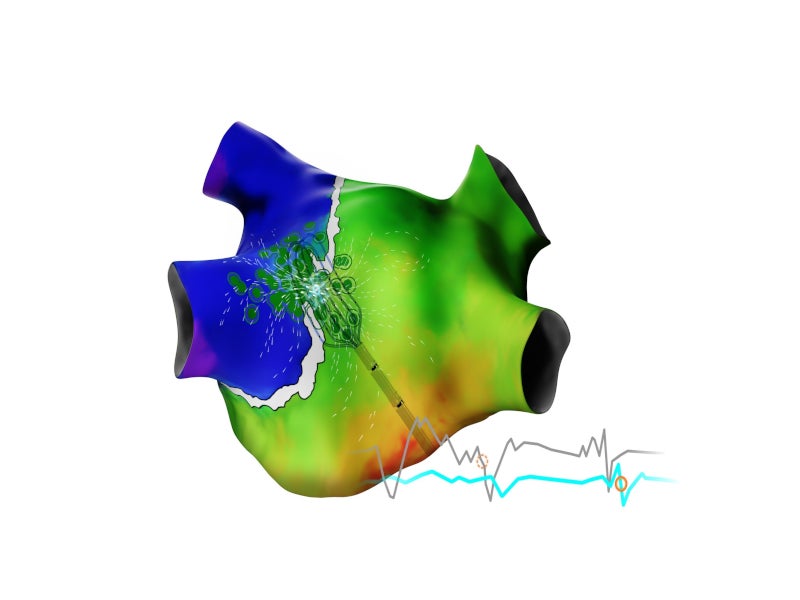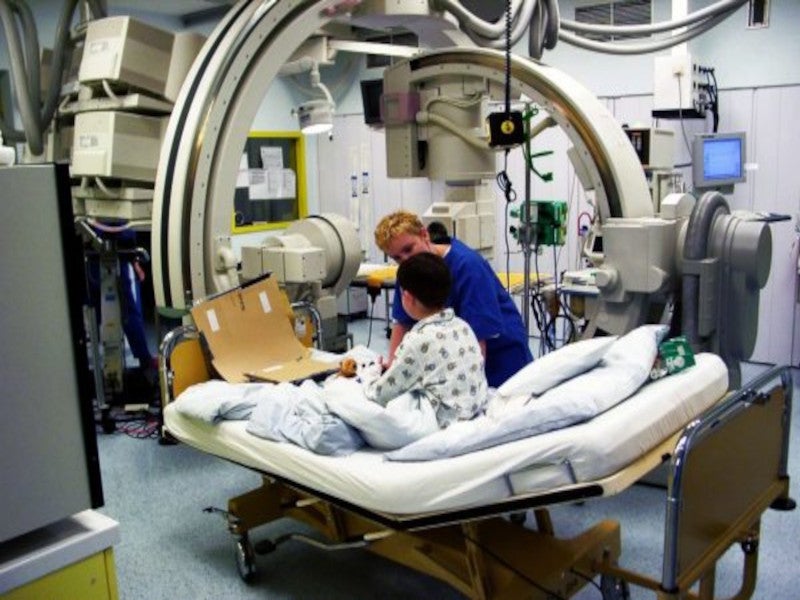The Dual-Energy THERMOCOOL SMARTTOUCH™ Surroundflow (SF) cardiac ablation catheter is indicated for the treatment of atrial fibrillation (AF), including paroxysmal AF and persistent AF, by creating precise lesions in the heart tissue. It was developed by Biosense Webster, a subsidiary of the pharmaceutical company Johnson & Johnson,
The SMARTTOUCH technology enables real-time feedback on the contact force between the catheter tip and the heart tissue. This ensures optimal lesion formation by maintaining consistent and appropriate pressure during ablation.
The SF technology features an enhanced irrigation system that cools the catheter tip more effectively, reducing the risk of overheating and improving procedural safety and efficacy.
The catheter is the only approved device, which combines contact force sensing with advanced irrigated porous tip ablation for improved efficiency.
Regulatory approvals for THERMOCOOL SMARTTOUCH SF catheter
The US Food and Drug Administration (FDA) approved the THERMOCOOL SMARTTOUCH SF ablation catheter for paroxysmal AF in August 2016.
Marketed as both unidirectional and bidirectional devices in the US and Europe, the catheter received FDA approval for persistent AF in October 2020 based on the results of a prospective PRECEPT study.
Biosense Webster received approval from the FDA for a zero-fluoroscopy workflow in August 2023. The THERMOCOOL SMARTTOUCH SF catheter is among the devices that can be used in this workflow. The revised workflow suggests that ultrasound or other direct imaging guidance may be considered instead of using fluoroscopy.
THERMOCOOL SMARTTOUCH SF ablation catheter details
The THERMOCOOL SMARTTOUCH SF ablation catheter incorporates both pulsed field ablation (PFA) and radiofrequency (RF) ablation technologies, with a PF/RF ablation index to guide the therapy. The catheter’s porous tip and electrodes deliver targeted thermal energy while its stable contact force ensures consistent lesion formation, thereby reducing the overall ablation time.
Integrated with the TRUPULSE™ generator, the system can toggle between RF and PF energy, providing flexibility during procedures. The generator also monitors the energy delivery to the catheter. Additionally, the catheter is compatible with the CARTO™ 3 advanced 3D imaging system, which facilitates precise navigation and placement by combining contact force technology with live 3D mapping.
A notable feature of the catheter is its efficient cooling mechanism, which operates at half the flow rate of previous models, enhancing fluid management during ablation procedures. The location sensor and transmitter coil within the catheter transmit accurate reference signals, further supporting the effectiveness of the ablation process.
The THERMOCOOL SMARTTOUCH SF ablation catheter improves outcomes with a more stable catheter-tissue contact force. It reduces the procedure time by 19% and fluoroscopy time by 55% and improves the manoeuvrability and handling for exceptional control.
The catheter with the CARTO 3 system can facilitate a personalised ablation approach for patients, resulting in high effectiveness for long-term in persistent AF patients.
CARTO 3 imaging system details
The CARTO 3 system is an innovative imaging technique that uses electromagnetic technology for 3D real-time mapping of the patient’s cardiac anatomy.
The system assists electrophysiologists by creating a precise 3D map and locating the exact position and direction of catheters in the heart during diagnostic and therapeutic procedures. It enables advanced visualisation during ablation procedures.
The 3D image generated by the device helps doctors direct the catheter to the site in the heart where RF energy administration is required.
The CARTO 3 system employs fast anatomical mapping (FAM) technology that enables clinicians to easily construct a CT-like resolution map of the heart, reducing the need for fluoroscopy radiation during catheter ablation procedures.
It can run software modules that incorporate more innovative features and current innovations in the electrophysiology field.
The latest version of the imaging system, CARTO 3 System Version 8, was launched in May 2024. The software includes the CARTO ELEVATE™ Module and CARTOSOUND™ FAM Module, which are designed to enhance efficiency, reproducibility, and accuracy for electrophysiologists performing catheter ablation procedures.
PRECEPT study
The PRECEPT trial is a prospective, non-randomised, multi-centre study on 381 patients with symptomatic persistent AF to assess the safety and efficacy of the THERMOCOOL SMARTTOUCH SF ablation catheter.
The trial took place at 27 sites across the US and Canada. The catheter with the CARTO VISITAG® Module was utilised to conduct specific ablation strategies tailored to the individual patient.
All patients underwent pulmonary vein isolation of all veins while 44.5% of them received additional left atrium ablation.
Approximately 80.4% of patients treated with the THERMOCOOL ablation catheter with the CARTO VISITAG Module experienced freedom from symptomatic persistent AF at 15 months after treatment while 86% of the patients experienced freedom from repeat procedures at 15 months.
In persistent AF patients, radiofrequency ablation with the catheter led to a clinically significant improvement in the quality of life (QOL), as well as a decrease in the use of antiarrhythmic drugs (AAD), cardioversion, and hospitalisation.
SmartfIRE study
The SmartfIRE study is an open-label interventional study evaluating the safety and efficacy of the THERMOCOOL SMARTTOUCH SF catheter with the TRUPULSE generator for treating paroxysmal AF.
The study enrolled 149 adult patients with drug-refractory paroxysmal AF who received PF or RF catheter ablation using the THERMOCOOL SMARTTOUCH SF catheter and TRUPULSE generator during the cardiac ablation procedure.
The findings demonstrated that using the THERMOCOOL SMARTTOUCH SF catheter during standard electrophysiology mapping and ablation procedures in patients resulted in 100% acute procedural success, with 96.8% of cases showing no acute reconnections in the veins.









